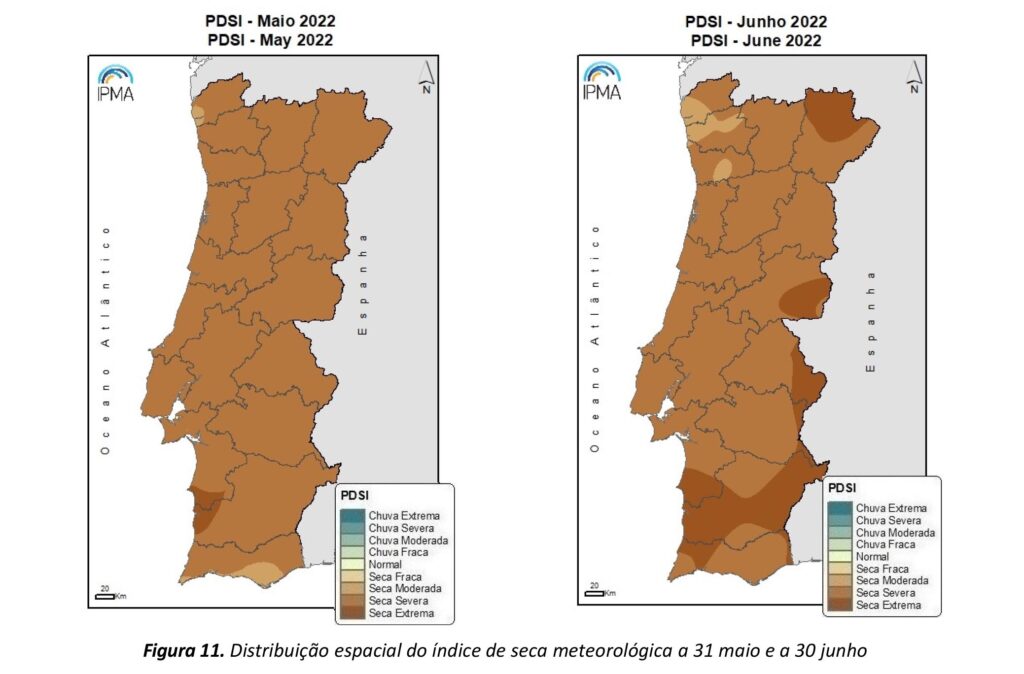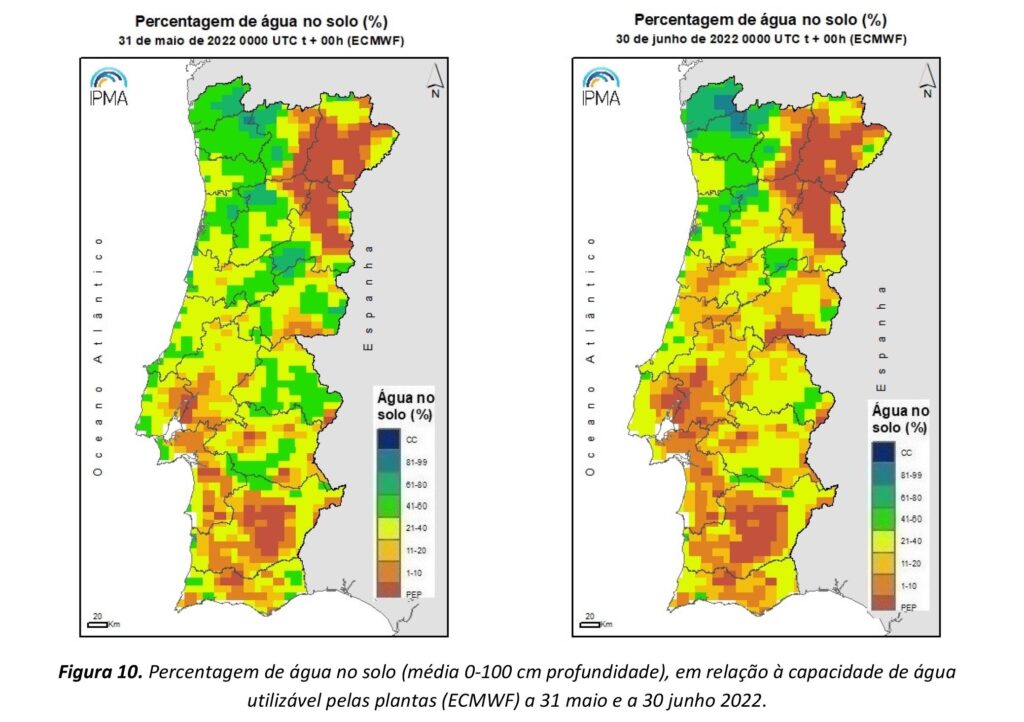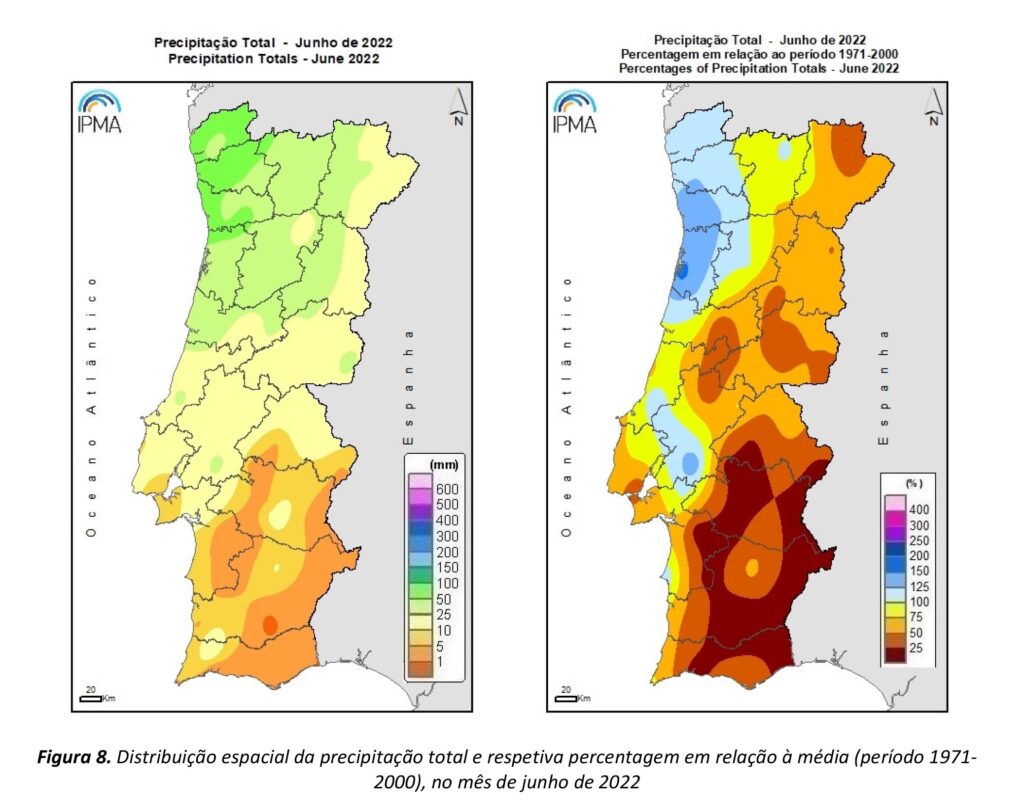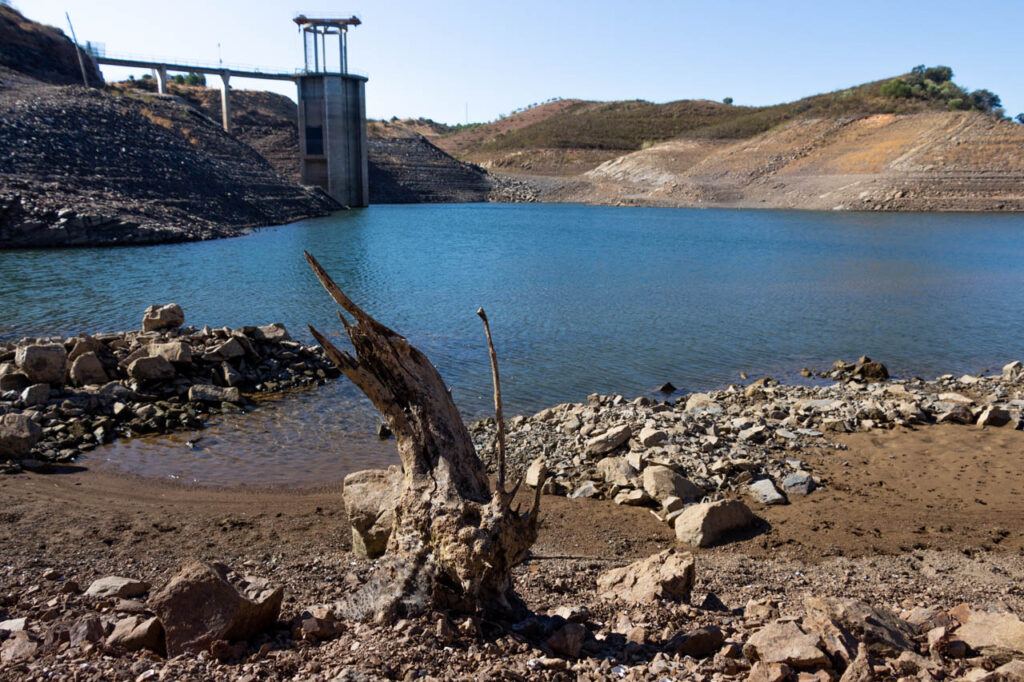The Algarve only has water «for one year», if the next «rainy season» is the same as the one that has passed, and «much more» needs to be done to prevent water from running out of the Algarve taps. The warning is made by António Pina, president of AMAL – Intermunicipal Community of the Algarve, on the day that the Portuguese Institute of the Sea and the Atmosphere (IPMA) released the June Climatological Bulletin.
According to the most recent monthly analysis carried out by the institute, “the month of June 2022 was classified as hot and dry in mainland Portugal”, which contributed to worsening the drought, which previously affected the entire national territory.
In relation to May, at the end of last month «there was an increase in the area in extreme drought, particularly in the South region and in some places in the North and Center interior».
In the Algarve, for example, in the interior Barlavento area, corresponding to the municipalities of Aljezur and Monchique, the drought is now extreme, an aggravation compared to last month. Also the Baixo Alentejo is now, almost in its entirety, in this situation.
The entire remaining territory of the Algarve and Alentejo is currently experiencing severe drought.
This is a situation that is already generating great concern among official entities and Algarve municipalities.
«The Algarve, according to the regional director of the Portuguese Environment Agency, has water for one year, if we have a year like the last one. We, the mayors of the Algarve, are worried and we have, above all, to make people understand, because they still haven't understood”, said António Pina.
"I'm talking about human consumption, which, despite all the communication that is made, has increased compared to 2019. We don't have more population, we don't have more tourists, but we have 14 or 15% more consumption", he said.
At this moment, assured the mayor of Olhão, a meeting of mayors is already scheduled, to take place on the 15th, where measures to be taken to reduce water consumption at the municipal level will be agreed.
«The APA director left us a set of examples from other parts of the Iberian Peninsula and the Mediterranean, where there are situations similar to ours and even more serious. In Spain and Italy, there is already urban rationing”, he illustrated.

At the moment, the issue of rationing water in an urban context has not yet arisen in the Algarve region, but it is necessary to «use water better, more efficiently».
“We have water until the end of next summer. But if it doesn't rain, then we don't have any more and we will have a very serious problem”, warned the president of AMAL.
At the moment, the different mayors of the Algarve are carrying out a survey of the measures that can be implemented in their territories, to reduce the use of water.
«In the case of Olhão, one of the measures we are going to put into practice is to stop watering the green spaces, the grass. 90% of lawn spaces will disappear, they will dry up. Then they will be reconverted, but the first step is to let them dry», exemplified António Pina
Returning to the June Climatological Bulletin, «the percentage distribution by classes of the PDSI index in the territory is as follows: 3.7% in moderate drought, 67.9% in severe drought and 28.4% in extreme drought», revealed the IPMA.
Comparing with previous drought situations, in the month of June, «it is verified that the droughts of 2005 and 2012 had more than half of the territory in the extreme drought class, while the current drought presents a high percentage in the severe drought class and about 1/3 of the territory in extreme drought'.
«At the end of June, there was a decrease in the percentage of water in the soil throughout the territory, except in Minho and Douro Litoral. In the Center and South regions, the most significant decreases occurred in some places in the Tagus valley and in the districts of Castelo Branco, Setúbal, Beja and Faro, with many sites with values below 10% and equal to the permanent wilting point”, added the institute.

The IPMA also reveals that the average temperature value was fixed at 20.40 °C in June, a value «0.98 °C higher than the normal value in the period 1971-2000».
Mean temperature values higher than those currently recorded have occurred in 25% of the years since 1931.
In terms of precipitation, the average for June «was lower than the normal value for 1971-2000, corresponding to 69%».
«Despite having registered a lower value than normal in June, regionally there were significant contrasts, with the North and Central coastal region registering higher values of precipitation, having been on days 1 to 3, 15 and 21 to 23 that the highest daily values were found. In the South region there was also the occurrence of precipitation, but with little significant values», concluded the IPMA.




















Comments